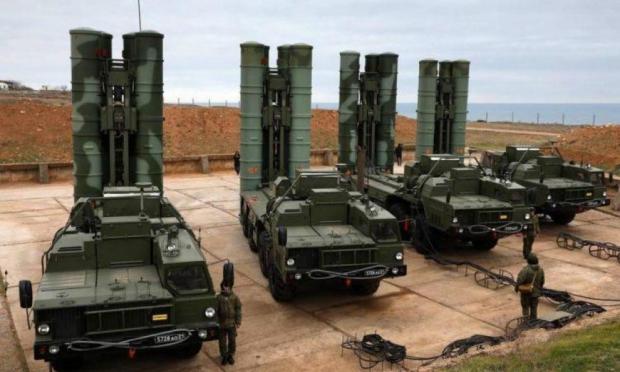It is a fact that Russia is the main supplier of weapons systems and equipment to India
In an earlier article we reported that New Delhi had procured five Russian S-400 Triumph anti-aircraft batteries for $5.43 billion.
This agreement was signed in October 2018 during the annual bilateral summit between the two countries.
However, the Indian Air Force (IAF) blamed the Russian war industry, claiming that: "Due to the war in Ukraine, Russia is unable to deliver vital equipment that it had pledged to provide, noting that a major delivery scheduled for 2023 will ultimately not take place. Happen".
These are likely to be arrays of S-400s, as two of the five ordered have yet to be delivered, as well as a batch of spare parts for the Su-30 MKI, of which the IAF has 250 of the fighter in its force.
The above "links" to an International Media article, according to which "Indian S-400 launchers with 9M96E missiles were spotted in Russia", which states:
"Strange photos appeared among some Russian accounts on the Telegram social network. The photo captured the movement of two 51P6A launchers, which are part of the S-400 missile complex. These launchers are 9M96E missile carriers.
According to the author, these are two of the ordered Indian S-400 air defense systems, the delivery of which should be completed by the end of 2024.
The author says that despite the war between Russia and Ukraine, and the imposition of Western sanctions against the Russian Federation, Russia is fulfilling its commitments to supply the Indian anti-aircraft forces.
The 9M96E missile is a surface-to-air missile (SAM) developed by Russia.
It is designed to engage and destroy various types of aerial targets, including aircraft, helicopters and unmanned aerial vehicles (UAVs).
The 9M96E missile has quite remarkable technical characteristics. It is a two-stage rocket about 5.55 meters long and 0.51 meters in diameter. The missile weighs about 420 kg and is equipped with a high-explosive fragmentation warhead. It uses a solid-fuel rocket engine for propulsion, allowing it to achieve high speeds and maneuverability during flight.
In terms of its operational range, the 9M96E missile is capable of engaging targets at distances of up to 120 kilometers, giving the S-400 system significant range, allowing it to effectively cover large areas and protect other weapon systems and assets within them.
The functionality of the 9M96E missile is based on advanced guidance and control systems. It uses an active radar seeker to track and engage targets, ensuring accurate and reliable target acquisition.
The missile's guidance system is capable of performing mid-course updates, allowing it to adjust its trajectory and intercept moving targets.
In addition, the 9M96E missile has a proximity fuse, which allows it to detonate close to the target, increasing the probability of a successful engagement.
Regarding the deployment of the S-400 systems, India has not officially disclosed specific locations.
However, it is expected that these systems will be strategically placed to protect vital installations, military bases and high-value assets across the country.
The S-400's long-range capabilities make it suitable for the defense of large areas, including large cities, industrial centers and sensitive military installations.
The exact deployment locations will likely be determined based on India's threat perception and defense strategy.
It is worth noting that India's decision to purchase the S-400 systems has raised concerns and attracted attention from other countries, particularly the United States.
The US has raised concerns about the potential impact of this deal on India's strategic relationship with the US and its compatibility with the US-led international defense framework.
However, India has argued that its defense procurement decisions are based on national security interests and its long-standing defense ties with Russia.
From the above it appears that Russia, in an unknown location, is evaluating-testing the "Indian" S-400 before their delivery in 2024, as it has been leaked.
Our assessment is that as part of their "tests" the "Indian" S-400s will replace other arrays of Russian S-400s from areas of Russian territory, in order for them to be pushed further west in view of Moscow's imminent major offensive in Ukraine, in areas of Eastern Ukraine and Crimea.
In this way, the Russians will combine "the bad with the good", since they have lost at least 2 S-400 arrays from Ukrainian attacks in Crimea and Eastern Ukraine, so their plan to send new arrays there is completely logical.
The new Russian S-400 arrays to be deployed there will likely come from areas east of Moscow, while these will be replaced in the coming months by "Indian" S-400s which will be evaluated on site, away from the Ukrainian front, before delivered to New Delhi in 2024.



